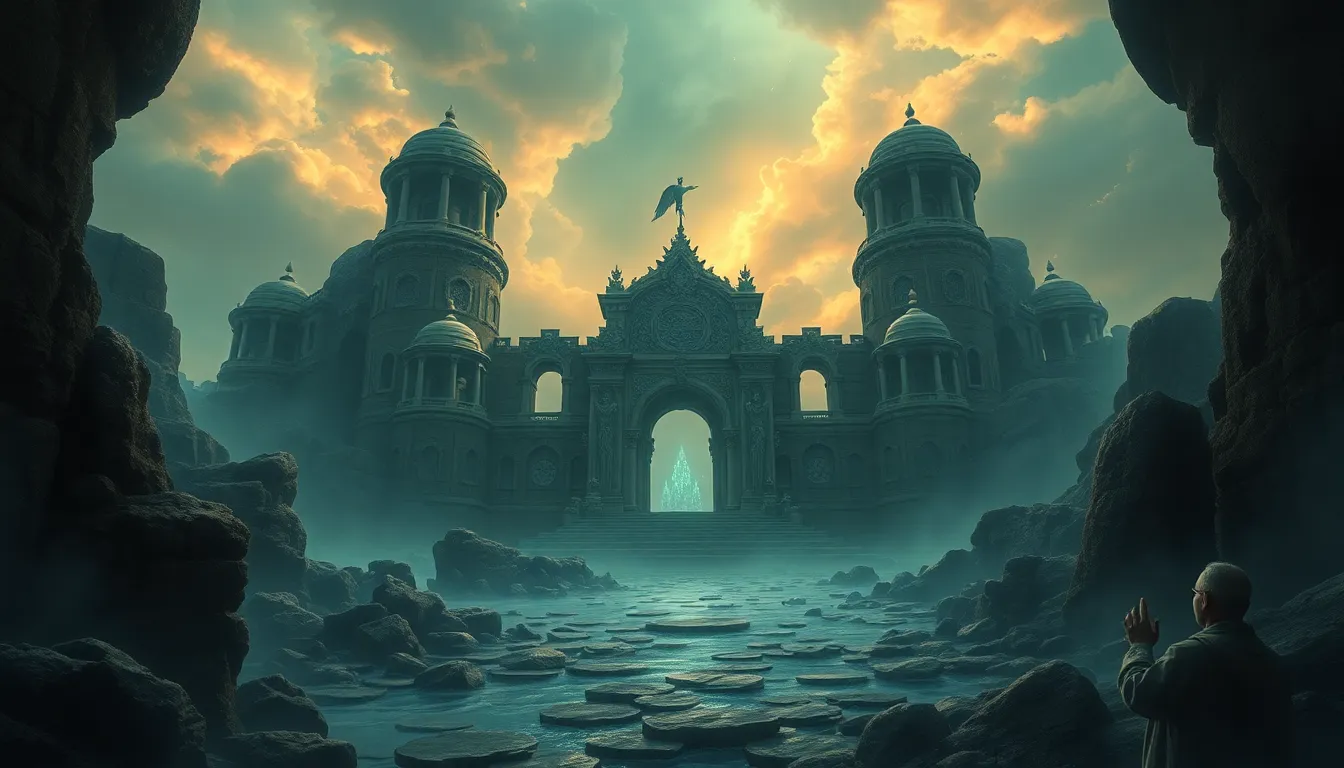The Floods of History: How Ancient Myths Predict Modern Events
Introduction: The Intriguing Intersection of Myth and Reality
Throughout history, floods have served as a powerful motif in various ancient myths, symbolizing chaos, destruction, and renewal. These narratives often reflect humanity’s confrontation with nature, showcasing our fears and hopes. As we delve into these ancient stories, it becomes evident that they not only capture the essence of natural disasters but may also echo the experiences of modern societies facing similar cataclysms. This article explores the rich tapestry of flood myths, their cultural significance, and how they may predict or resonate with contemporary flooding events.
The Universal Theme of Floods in Mythology
Flood myths are prevalent across numerous cultures, each with its unique interpretation but often sharing common themes. Notable examples include:
- Mesopotamian Mythology: The Epic of Gilgamesh recounts a great flood sent by the gods to destroy humanity, with Utnapishtim being the sole survivor.
- Greek Mythology: In the tale of Deucalion and Pyrrha, Zeus floods the earth due to human wickedness, allowing only Deucalion and Pyrrha to survive.
- Hindu Mythology: The Matsya Purana describes a flood that wiped out civilization, where the god Vishnu saves Manu, the progenitor of humanity, in a boat.
Common elements in these narratives include:
- Divine retribution or punishment for humanity’s sins.
- The theme of renewal and rebirth following destruction.
- The survival of a chosen individual or group, often tasked with repopulating the earth.
Case Study: The Epic of Gilgamesh and the Great Flood
The Epic of Gilgamesh provides one of the earliest and most detailed accounts of a great flood. In this narrative, the gods decide to flood the earth to eliminate mankind, but Utnapishtim is warned by the god Ea and builds a massive boat to save himself, his family, and pairs of every animal. This story closely parallels the Biblical account of Noah’s Ark, where Noah is similarly instructed by God to build an ark to survive a flood sent to cleanse the earth of sin.
Both stories emphasize themes of morality, survival, and the divine’s role in human affairs. The similarities raise questions about the origins of these myths and whether they could stem from a shared historical event, perhaps a significant flooding incident in the ancient world.
The Role of Natural Disasters in Shaping Cultural Narratives
Natural disasters, particularly floods, have profoundly influenced cultural narratives and myth-making. Historical floods often leave lasting impacts on the societies that experience them, shaping their beliefs and values. For instance:
- Floods can instill a sense of vulnerability, prompting communities to explain such events through myth.
- They may foster a collective identity, uniting people through shared experiences of loss and survival.
- The psychological trauma of catastrophic flooding can lead to the creation of cautionary tales aimed at promoting moral behavior.
Modern Flooding Events: A Reflection of Ancient Myths?
In recent history, significant flooding events have drawn parallels to ancient flood myths. Examples include:
- Hurricane Katrina (2005): The devastation in New Orleans was likened to biblical plagues, with narratives emerging that mirrored themes of divine punishment and redemption.
- The 2010 Pakistan Floods: These floods displaced millions, and local narratives invoked ancient stories of survival and resilience in the face of overwhelming natural forces.
As communities grapple with the aftermath of such disasters, the enduring legacy of flood myths offers both comfort and caution, suggesting that humanity’s struggles against nature are timeless.
Symbolism of Water in Ancient Cultures
Water in ancient cultures is a multifaceted symbol representing chaos, cleansing, and rebirth. Flood myths often depict water as:
- A source of destruction, overwhelming civilizations and causing chaos.
- A cleansing force, purging humanity of its sins and wrongdoings.
- A catalyst for rebirth, allowing new life and civilizations to emerge from the ruins.
This symbolism resonates today, as we continue to navigate our relationship with water in both practical and metaphorical terms, reflecting our fears and aspirations.
Lessons from Ancient Myths: Preparing for Modern Disasters
Ancient narratives provide valuable insights into resilience and survival. By examining these stories, modern societies can learn important lessons, such as:
- The necessity of preparation and response strategies in the face of natural disasters.
- The importance of community solidarity and collective action during crises.
- Understanding the psychological impacts of disasters and the need for emotional support.
Incorporating these lessons into contemporary disaster preparedness frameworks can enhance our ability to respond effectively to future flooding events.
The Evolution of Flood Myths in Contemporary Media
Modern films, literature, and art often reinterpret ancient flood myths, reshaping them to reflect contemporary concerns. This evolution can be seen in:
- Movies like “2012,” which depict apocalyptic flooding scenarios, drawing on ancient narratives of destruction and survival.
- Literature that explores themes of climate change and environmental degradation, echoing the moral lessons of ancient myths.
- Art that uses water symbolism to comment on current societal issues, such as displacement and loss.
These reinterpretations influence public perception, reminding society of the relevance of ancient stories in understanding our modern relationship with nature.
Skepticism and Criticism: The Scientific Perspective
While many find meaning in the predictive nature of myths, skepticism exists regarding their relevance to modern events. Critics argue that:
- Myths are not predictive in a scientific sense, as they often lack empirical evidence.
- Relying on ancient narratives can detract from the need for scientific understanding of floods and climate change.
- Modern disasters require evidence-based responses rather than mythological interpretations.
Nonetheless, the intersection of myth and science can foster a richer understanding of human experiences with natural disasters.
Conclusion: Bridging Past and Present through Myth
The exploration of ancient flood myths reveals their enduring relevance in understanding modern events. As we confront the challenges posed by natural disasters, these stories serve as a bridge between past and present, offering insights into resilience, morality, and the human experience. The importance of storytelling in shaping our responses to natural disasters cannot be overstated, reminding us that while the world may change, the themes of survival and renewal remain timeless.


